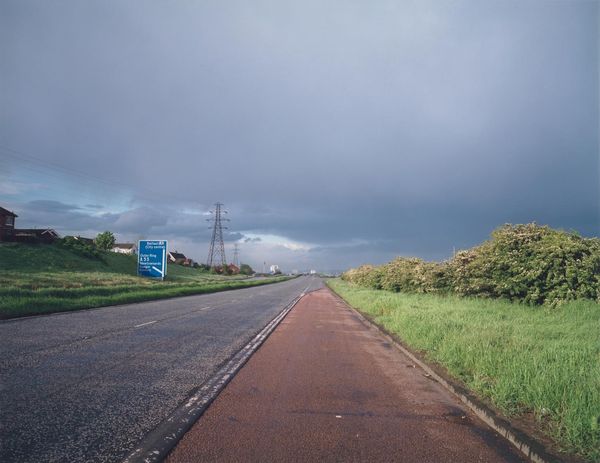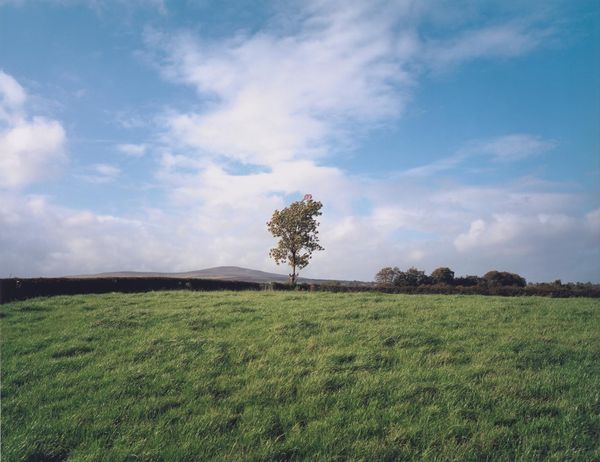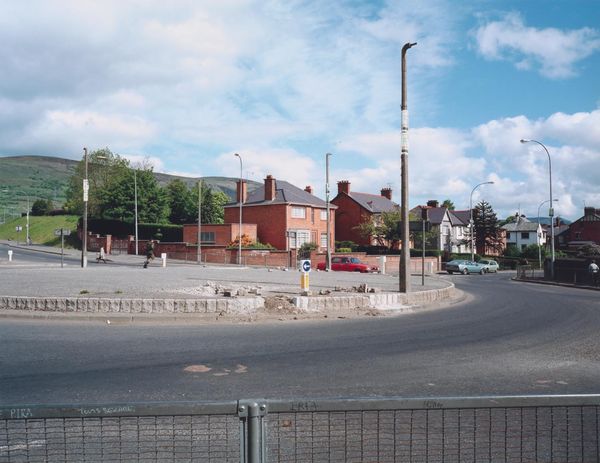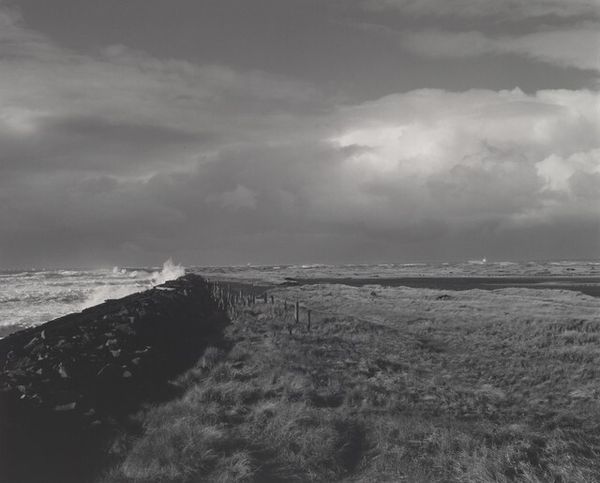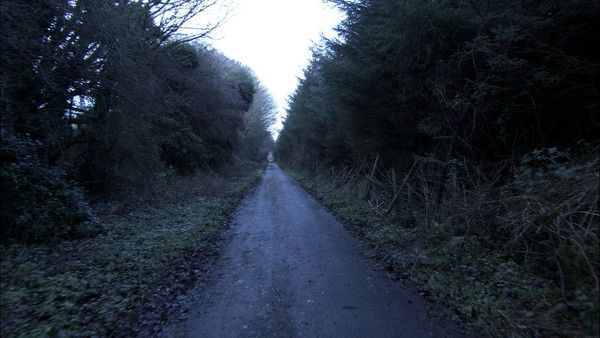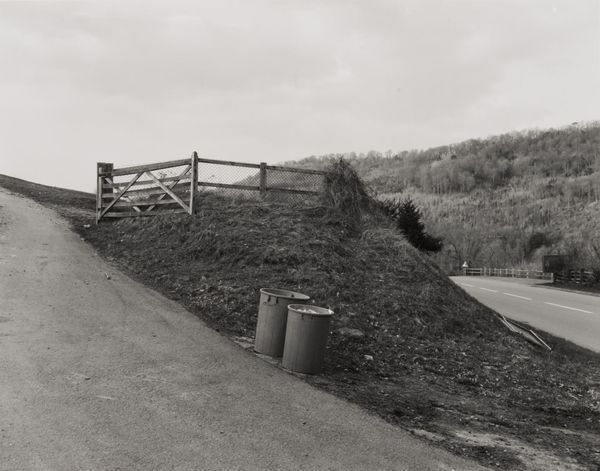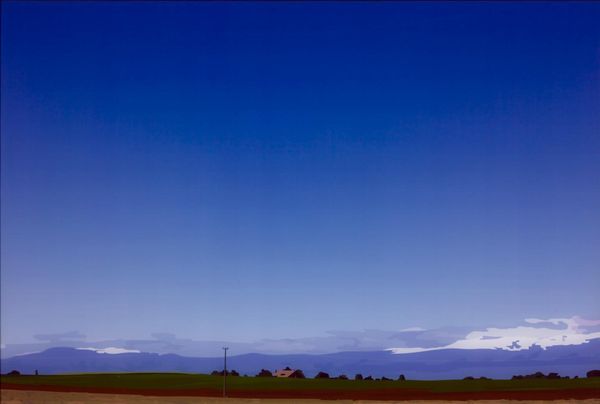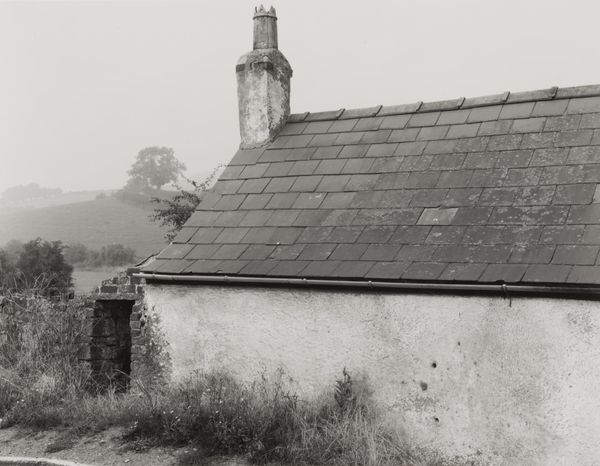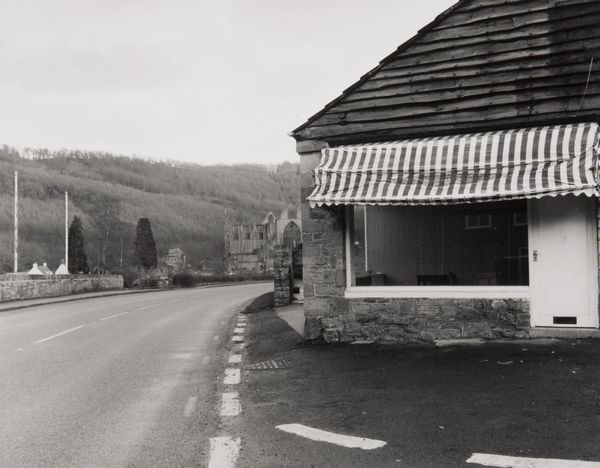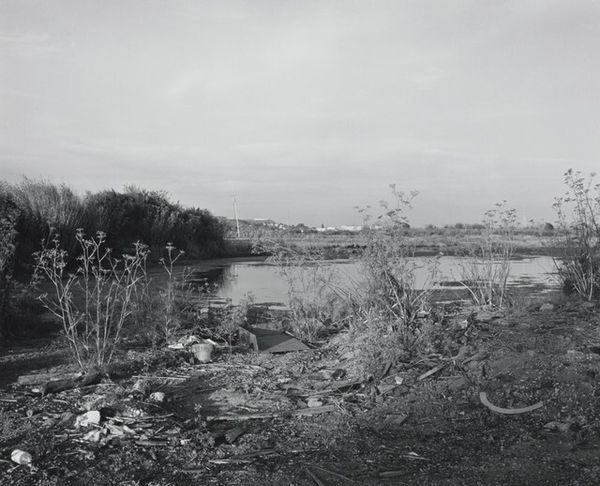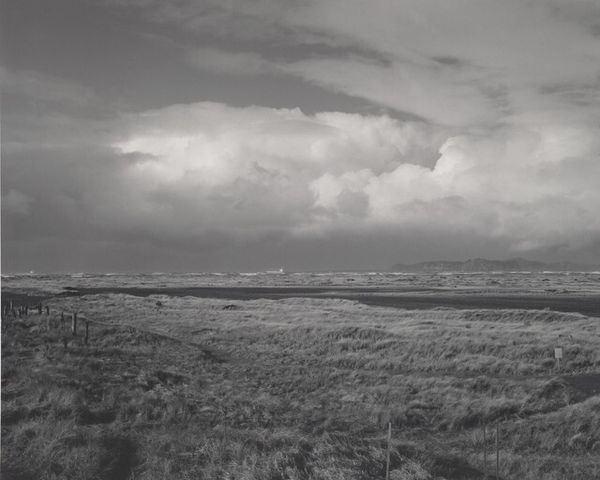
Dimensions: support: 680 x 880 mm
Copyright: © Paul Graham; courtesy Pace and Pace/MacGill Gallery, New York | CC-BY-NC-ND 4.0 DEED, Photo: Tate
Editor: Paul Graham’s photograph, "Paint on Road, Gobnascale Estate, Derry," captures an ordinary road but with a stunning vista. The casual markings on the tarmac feel almost like graffiti. What social narratives do you see at play here? Curator: This image, part of Graham's Troubles series, presents a landscape imbued with political tension. The seemingly innocuous paint marks hint at a deeper, perhaps unspoken, conflict. How does the banality of the scene contrast with its potential political significance, do you think? Editor: It’s subtle, yet the ordinariness makes it feel even more unsettling. So, Graham is using this everyday scene to comment on the normalization of conflict? Curator: Precisely. The photograph challenges us to consider the pervasive, often unseen, effects of socio-political unrest on daily life and the politics of representation. This work really makes you think. Editor: I agree. It's a powerful way to make a statement.
Comments
tatebritain 8 months ago
⋮
http://www.tate.org.uk/art/artworks/graham-paint-on-road-gobnascale-estate-derry-p79338
Join the conversation
Join millions of artists and users on Artera today and experience the ultimate creative platform.
tatebritain 8 months ago
⋮
From 1984 to 1986, Paul Graham documented Northern Irish locations featured in news reports of the Troubles. During his first visit, Graham was stopped by a British military patrol suspicious of his camera. As they left, he took a shot with his camera hanging from his neck. The photograph became a ‘gateway’ for Graham’s Troubled Land series. He felt his other images of rioting, murals and destruction, ‘weakly echoed what I saw in the newspapers. This one image did not’. ‘There were people walking to shops and driving cars – simply going about their day, but then there was a soldier in full camouflage, running across the roundabout.’ For Graham, the image ‘reintegrated the conflict into the landscape ... it was a conflict photograph masquerading as a landscape photograph.’ Gallery label, November 2024
